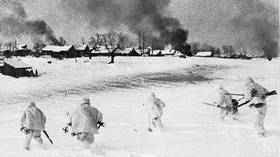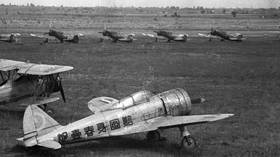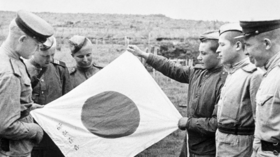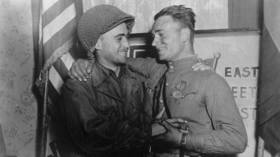How Nazi war criminals found safe haven
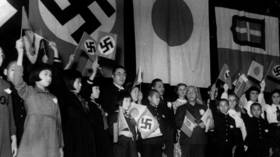
In Tokyo or any other big city in Japan, there is always a store selling military uniforms and paraphernalia – both authentic and replica – belonging to a variety of armies. The most popular among them are the modern American military uniform and, as strange as it may seem, the old German one circa the Third Reich’s Wehrmacht and SS days. Occasionally you might see people dressed in Nazi uniforms and sporting Totenkopf caps and red swastika armbands in the streets. Usually it’s someone going to a cosplay party, but mostly people buy these uniforms to add to their private collections or to wear at home or in theme clubs. There is no aversion to Nazi symbols here: unlike Germany, Japan never went through denazification and simply has no idea what it is. And the way many Japanese see the outcome of WWII is also not quite what other countries might expect.
Family Business
In early 2021, Shinzo Abe, who until recently served as prime minister of Japan, said that the country needs to establish an intelligence agency – the kind of statement he had refrained from in his official capacity.
It came as a bit of a surprise, but not really, as Abe has always been considered hawkish in his policies. Under his rule as the longest-serving prime minister, Japan had done plenty to stealthily revive its military sovereignty, shattered by the pacifist Article 9 of the 1947 Japanese Constitution and the 1960 Treaty of Mutual Cooperation and Security between the United States and Japan that stipulated that Japan didn’t really need an army. So Abe’s new suggestion is just a follow-up to the Act on the Protection of Specially Designated Secrets (SDS) that Japan adopted while he was in power.
Japan’s growing military budget (whose very existence would baffle many around the world), swift revamping of its army that technically doesn’t exist, as well as the willingness to dispense with the US defense ‘umbrella’ and create its own nuclear bomb, are all topics for a long conversation that Japanese traditionalists are not very keen to discuss. So let’s talk about the traditions first.
Shinzo Abe comes from a political dynasty. His father, Shintaro Abe, was a leading member of the Liberal Democratic Party (LDP), which has been in power for over 50 years. He served as the country’s foreign minister and married the daughter of prime minister Nobusuke Kishi in 1951. Shinzo Abe’s younger brother, Nobuo Kishi, took their mother’s family name to avoid allegations of nepotism. In 2020, Kishi became the defense minister of Japan.
Nobusuke Kishi had his own peculiar outlook on war. In 1935, he was put in charge of the industrial development of Manchukuo, a puppet state created in China by the Kwantung Army. This de facto meant that he was responsible for exploiting the conquered parts of China. It was there that he met the Kwantung Army commander, General Hideki Tojo. When Tojo became Japan’s prime minister in October 1941, he offered Kishi the post of the minister of commerce. On December 7, 1941, Hideki Tojo’s government declared war on the United States and authorized the Pearl Harbor attack.
During the war, Kishi had to change gears and serve as the minister of munitions. The title of this office may sound pretty modest, but in reality, Hideki Tojo’s close friend and protégé became a key figure among the most influential wartime officials in Japan. It was only to be expected that after Japan surrendered to the Allies, the US occupation offices branded both Nobusuke Kishi and Hideki Tojo Class A war criminals.
Class A Life
On September 2, 1945, Japan signed the instrument of surrender on board the battleship USS Missouri, and the US-led Allied occupation offices with General Douglas MacArthur at the helm started working on demilitarizing the country. The Allies were convinced that Japan’s political and military leadership had to be held accountable for their actions. This was enshrined in the 1945 Potsdam Declaration and reaffirmed by the US command in Japan.
Several months later, the Americans compiled a long list of officials who were to be detained or suspended. On January 4, 1946, the Supreme Commander for the Allied Powers (SCAP) issued a directive with Appendix A listing different categories of political and public figures who were to be purged. The top category – war criminals, Class A – had 3,422 names. Class B (career military personnel) included 122,235 people. Classes C through G had a total of 210,288 people on the list. In addition, 1,300 ultranationalist, militarist, and other similar organizations were disbanded and banned.
Does that mean all these people received the severe punishment they deserved? Not at all. While Hideki Tojo was sentenced to death, his fellow Class A criminal Nobusuke Kishi only spent three years in prison and was eventually released without being convicted or even charged. And he was not the only one. SCAP knew perfectly well that the purge was a big threat for high-ranking Japanese officials who weren’t willing to cooperate with the occupation offices.
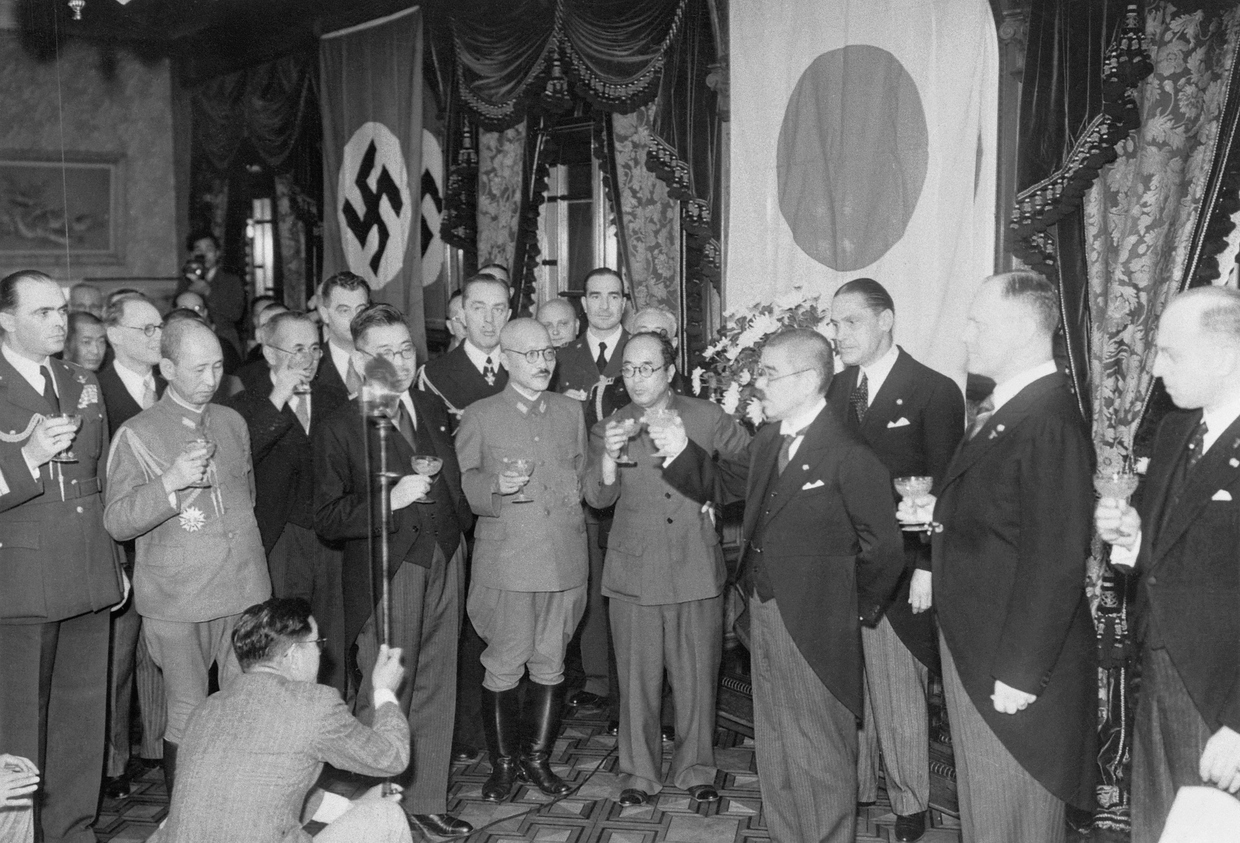
On the other hand, going overboard with it could have created too many enemies with a solid background such as politicians, entrepreneurs and public figures with strong anti-American views. The smarter move was to bring them over to the US side and to turn the most pro-American part of the former elite into the future leaders of Japan. Anyone who was for whatever small reason suspected of disliking the US was fired, while the rest carried on with their jobs, and there were a lot of them. As of September 15, 1946, only 894 out of the 7,769 investigated members of the Japanese political elite were relieved of their duties.
The occupation offices were particularly gentle with big businesses. A total of 161 companies working in Japan and 85 companies operating in Japan-occupied territories went through the purge, but actual punishment befell only the CEOs of the businesses that manufactured items for direct military use. Business circles were small fry, however. One good example of how gentle and selective the purge was is the fact that someone as notorious as Masanobu Tsuji – a former general who initiated the Bataan Death March, killing 500-650 American POWs and thousands of other people from different countries – actually went on to be elected to the postwar parliament.
Tsuji, who rightfully suspected he would be hanged for all the war crimes he had committed, came back to Japan from Southeast Asia only in 1949. As we learned from the CIA documents unclassified in 2006, the agency soon recruited him in the hope that he would be able to unite those who opposed antimilitary and communist views. At the end of the day, Tsuji, however, turned out to be a wild card. In 1961, he went to Laos to join the guerilla war and no one has heard anything about him ever since. The same could not be said about his comrades-in-arms.
People Who Were Needed
Tsuji’s case is a good example of what was happening in the American occupation administration during the first few postwar years. The Americans realized only too soon that Japan’s capitulation was just a formality, while its generals were ready to turn on the vendetta mode and even start a partisan war to fight back. SCAP made it a priority to look out for any possible sabotage attempts and saboteurs, as well as to gather intelligence to help define possible allies and possible enemies.
From 1946 to 1948 (and that’s exactly when the Cold War started), however, the American administration was more interested in securing as many allies as it could for the campaign against the Russians, Communists, and left wing in general, rather than for prosecuting Japan’s military criminals, as long as they were anti-left/Communist/Russian. By mid-May 1948, the decisions on the purge project were finalized. On December 23, 1948, seven Class A war criminals sentenced to death by the International Military Tribunal for the Far East were hanged. The next day, a total of 19 Class A war criminals, including three ex-ministers of the interior, three yakuza bosses, and minister of munitions Nobusuke Kishi were released. They were never charged or convicted.
There were also quite a few of those who were charged, tried, and convicted and were due to serve many years or even a lifetime in prison. No one had the formal authority to alter the official rulings except the tribunal itself, but SCAP decided not to bother and issued a directive to replace lifetime sentences with 15 years in prison, and to cut all other prison terms by a third.
In June 1950, the Korean War began, and three months later, General MacArthur set up the Appeal Board that redeemed over 10,000 war criminals under the provisions of several Directive 01.4 articles. Later, all other charges produced by the purge authority were dropped as well, including those against all ex-officers of Japan’s secret police. Their skills were needed to fight the new “Communist threat.” They were a precious resource for building a new Japan, and that alone was reason enough to overlook their past and the methods they favored. Thus, ex-policemen became policemen again, and ex-yakuza bosses and ex-ministers got back their titles and influence. Nobusuke Kishi, who basically ran the country’s entire defense industry during the war, became an MP as early as in 1953. In 1955, he was appointed secretary of the newly established Japan Democratic Party. In 1956, he was still there when it merged with the Liberal Party, forming an organization that rules Japan up to this day.
The founder of the Liberal Party was Ichiro Hatoyama, minister of education from 1931-1934, known for his “thought control” policies. He was also on the US sanctions list. He was effectively removed from Japan’s political life until 1951. In 1954, however, he made an impressive comeback as the head of the government. In 1956, 13 out of 17 ministers in his second cabinet had a history of being banned from politics in the past.
As for Kishi, he had ties with many of those who were managing the occupied territories and controlled the war economy, including Naoki Hoshino, Etsusaburo Shiina, Hisatsune Sakomizu, Teiichiro Morinaga, and others, collectively dubbed the “subcontractors of the occupation” in the media. These were the same people who took control of the new Japan’s economy. In 1957, Nobusuke Kishi became the new head of the government, while his stepbrother Eisaku Sato became the minister of finance. Prior to that, Sato had been under investigation for corruption, but the charges never stuck.
Firm Hands And A Tainted Past
The economic component is crucial to state-building, but it’s not the only thing that gets the job done. For Japan, it was equally important to establish a new, ‘liberal’ framework of governance and social management. In 1960, as many as 54 members of the Parliament were former interior ministry officials who had served in the government during the war. They were the same people who, just a few years before, were listed under various categories of Directive 01.4.
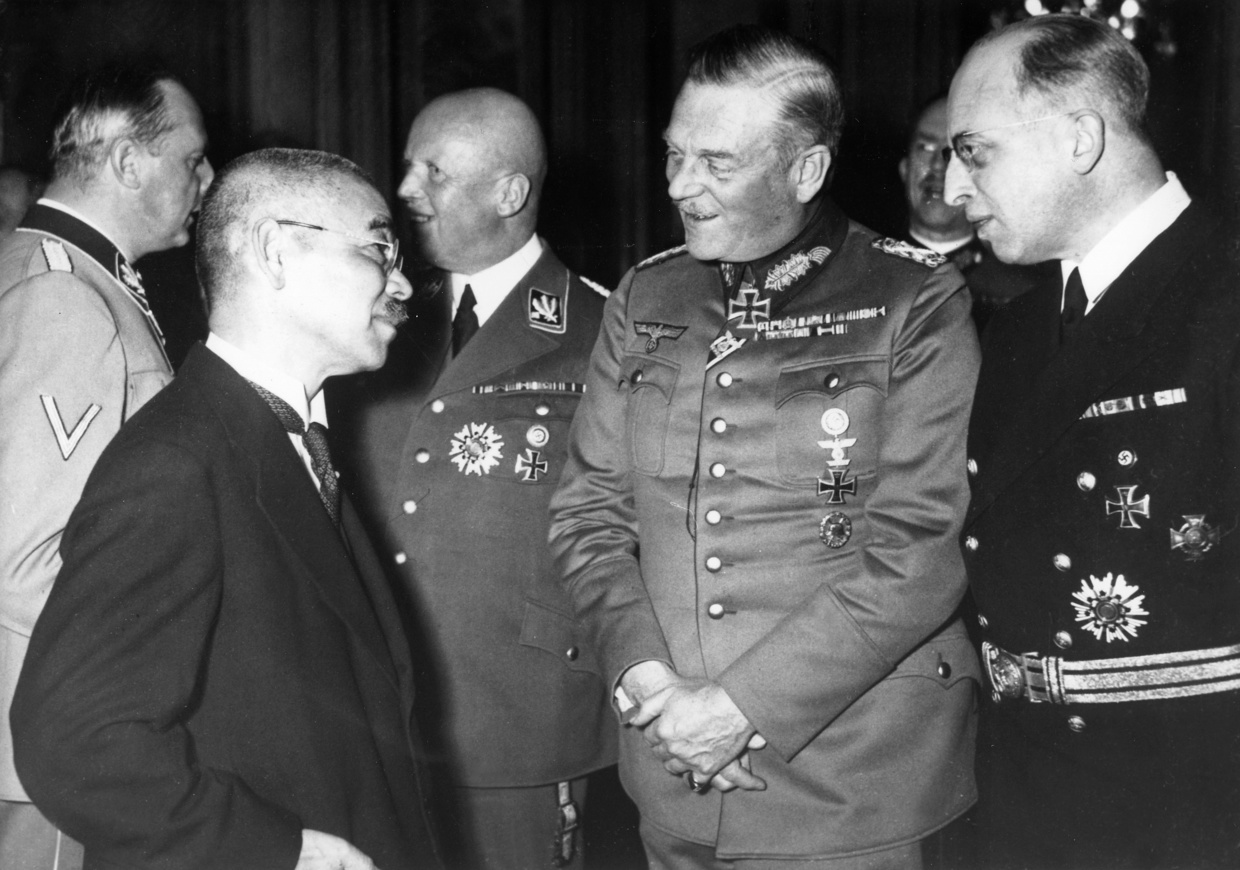
Senior officers of Tokko, Japan’s secret police that was akin to Germany’s Gestapo, occupied key positions in many postwar cabinets. For example, Kingo Machimura, a police chief known for cracking down on ‘free thinking,’ became the minister of the interior. Kyoshiro Niwa, head of the Kyoto branch of Tokko, became the minister of transportation. Eijo Okazaki, head of the Tokyo Tokko branch, was appointed the deputy minister of labor and deputy chairman of the Liberal Democratic Party’s Public Safety Commission. Bumbei Hara, chief of the Kagoshima section of Tokko, was promoted to head the Tokyo Metropolitan Police. His former colleague Seisuke Okuno served as the minister of education and the minister of justice before taking the helm of the National Land Agency. Yoshimi Furui, who served as the deputy minister of the interior during the war, became the minister of welfare and later the minister of justice. The 1944 minister of the interior, Shigeo Odachi, was appointed minister of education after the war. Former Tokko chief in Wakayama Keikichi Masuhara got to be in charge of Japan’s Self-Defense Forces, which was an awkward postwar euphemism for the de facto Japanese army. Fumio Goto, former minister of the interior and a Class A war criminal, became a senator. And the list goes on and on...
All of them escaped prison through the efforts of SCAP and General Charles A. Willoughby in particular. Willoughby, assistant chief of staff for intelligence (G2), was known to be called by General MacArthur as ‘my pet fascist.’ It was Willoughby and MacArthur who helped General Shiro Ishii, one of the worst criminals in human history and director of the infamous Unit 731, to escape prosecution. Unit 731 was a top-secret branch of the Kwantung Army that tested biological weapons on living humans. Among its victims were the Chinese, Koreans, and Russians. The test subjects were internally referred to as the ‘logs.’
According to various sources, between 3,000 and 10,000 ‘logs’ were murdered in the most gruesome ways by Unit 731. Shiro Ishii surrendered to the US forces, was given immunity from prosecution, as well as a grant and a laboratory in Maryland, where he continued his work after the war.
A Japanese journalist quite accurately noted at the time that the International Military Tribunal for the Far East selected a handful of people to punish for the crimes committed against Japan’s wartime enemies – the US, the UK, China, and the Soviet Union – but overlooked the hundreds, if not thousands, of military and police officers, bureaucrats, and industrialists who had committed crimes against their own people.
“Those who sent our people to the front lines, who took away their freedom and property, who imposed cruel and inhumane laws, still remain in positions of power after the war,” the journalist wrote.
The case of Shiro Ishii is proof that even some of those who committed the most gut-churning crimes against humanity were ultimately able to escape justice. One cannot help but think in this context of postwar Germany, where restoring justice became the number one priority for the entire nation, and no German war criminal was safe. The Germans passed judgement on their own criminals by putting them through a process of denazification. The Nuremberg trials, among other things, produced a list of organizations that were condemned as criminal in their nature. Membership and any association with these organizations was classified as a crime. Nothing like that ever took place in Japan, however.
The Liberal Spy
When Shinzo Abe, a member of a powerful political dynasty, said that Japan was in need of its own intelligence agency, it surprised the public for one simple reason. The country already has a total of 16 intelligence and counterintelligence organizations that cover all areas of the country’s security including military, political, scientific, and technical, and are perfectly capable of protecting the country. Abe’s supporters, however, claim that Japan is still not protected enough and demand a new, centralized intelligence apparatus. With this idea in mind, they found another “forgotten hero” from the past and rebranded him as a role model. Taketora Ogata is presented today as an ardent supporter of liberalism. He was also an enthusiast of creating “a Japanese CIA” back in the day.
A talented journalist named Taketora Ogata started his career by working his way to the leading positions in The Asahi Shimbun, one of the oldest and most influential newspapers in Japan. In 1944, he joined the Japanese government as the head of the Intelligence Bureau. His present-day fans say that Ogata was a champion of liberalism and freedom of speech (!) since he “fought to build a mechanism for exchanging and analyzing information through joint meetings of the Army, Navy and the government.” This very liberal idea of his never took off, as Japan was defeated and he was listed as a war criminal. In 1952, Ogata was cleared to return to politics and became the vice president of the Liberal Party of Japan. This was when he vowed to establish “a Japanese CIA.” He never went through with this project either, as he died in 1956 while preparing to run for the office of prime minister.
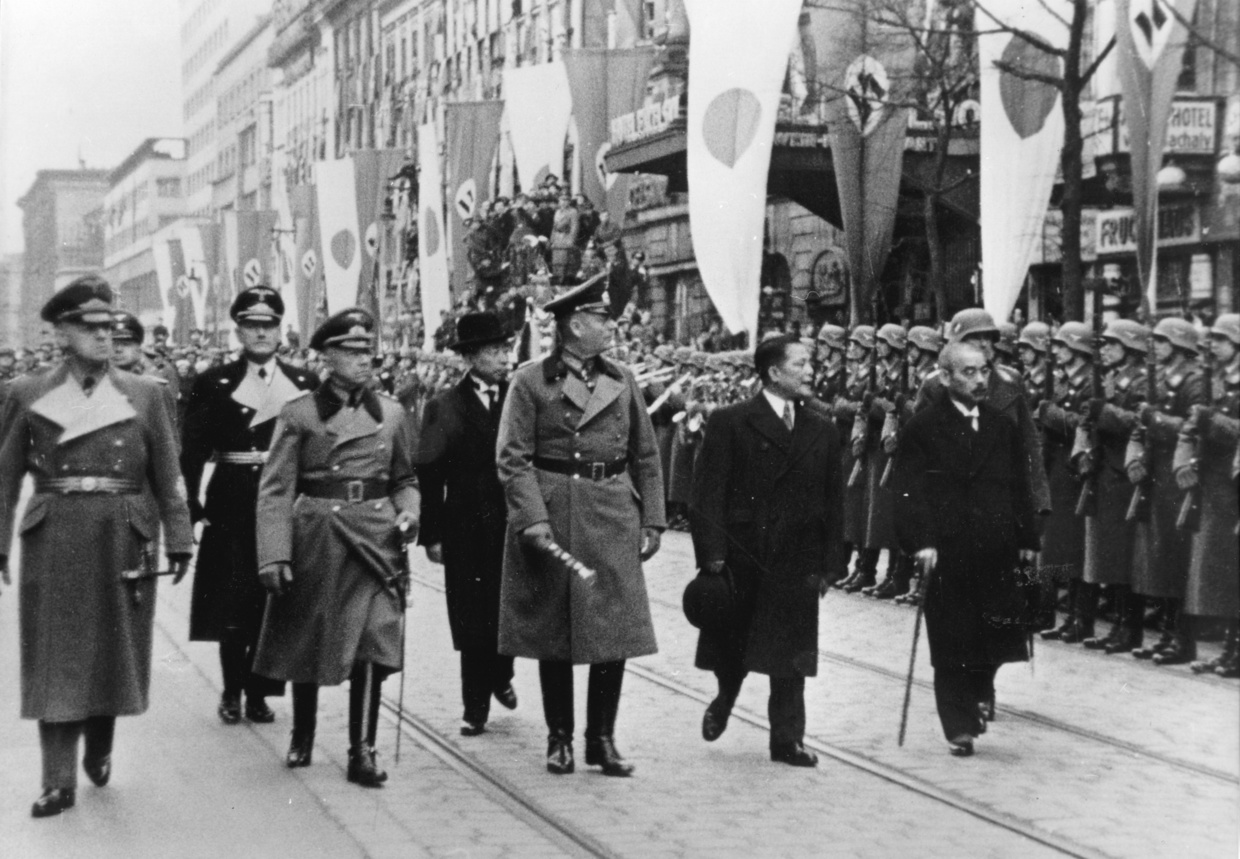
In present-day Japan, the idea of creating a seventeenth intelligence agency may well receive the support it needs. Its proponents see the creation of “a Japanese CIA” as a way to guarantee peace and security in the Asia-Pacific region – quite in the spirit of the “liberal spy” Taketora Ogata. But Japan’s current Prime Minister, Fumio Kishida, does not seem to be particularly eager to revive these old ideas. Even though he is the leader of the Liberal Democratic Party of Japan, his family background invites a more complicated perception of the past. Kishida’s father and grandfather were both members of parliament, his cousin was the minister of justice, and another relative of his, Kiichi Miyazawa, went on to serve as the prime minister, despite the fact that he was the chief of the Kempeitai military police department during the war.
On the other hand, some of the Kishida family died in the Hiroshima atomic bombing of August 6, 1945. It’s been reported that the future prime minister was affected by the memory of this tragedy since early childhood. Right now, Kishida is busy fighting the pandemic (and pretty successfully), boosting the economy (which seems to be going quite well too), and fighting the demographic problem (which is a more challenging task). Perhaps all that doesn’t feel liberal enough compared to the idea of creating one more intelligence agency, but it definitely helps people live better.
All that said, Japan is so big on personal freedoms, including freedom of speech, that one is absolutely free to flaunt a wartime Nazi uniform in public if they want. After all, there has never been proper denazification in Japan.
